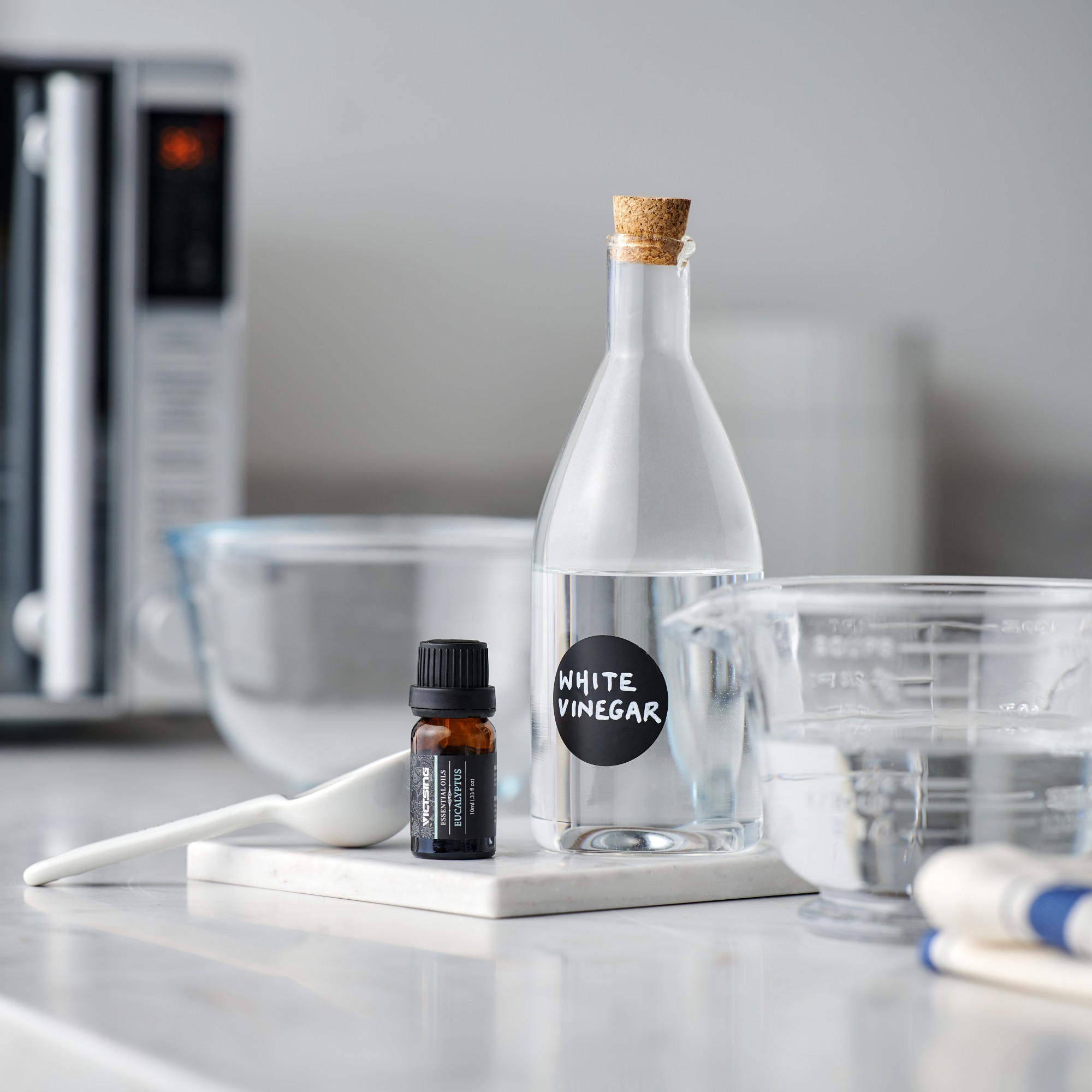How to soften bedding – 5 methods experts use to maintain super soft duvet covers and pillowcases
Wave goodbye to scratchy, cardboard bed sheets.


Cosying up in bed with fresh bedlinen is one of life's simple pleasures. It's why investing in good-quality bedding is always a good idea, and why it's important to understand how to soften bed sheets properly.
Bedding sets should be washed every week, but whether you have affordable or expensive duvet covers and pillowcases you will need to take the same amount of care to keep them as soft as the day you bought them
'Soft, smooth bed sheets are essential for a good night’s sleep, but achieving that luxurious feel requires proper care,' explains Inês Vaz-Pinto, partner and spokesperson from Torres Novas. 'With the right routine, you can preserve their softness and extend their lifespan, ensuring your bed linen remains as inviting and comfortable as the day you bought it.'
Sometimes bedlinen can get a bit stiff and lose its softness, but we've spoken to some of the industry's best experts on how to soften bed sheets and here's what they had to tell us.

Cascais Percale bedlinen
1. Add white vinegar to a wash
If you've just bought some new bedding it can be tempting to take it out of the pack and use it straight away, but you should wash new bedding first to give it a softer feel.
'Before using your new bed sheets, it’s important to prewash them,' advises Inês. 'Wash in cold water without detergent to remove any impurities or residues from manufacturing. For an added touch of softness, include half a cup of white vinegar in the wash. This helps eliminate factory-applied finishes and leaves the fabric feeling instantly smoother.'
After regular washing, if you begin to notice your bedlinen is becoming stiff, using vinegar instead of fabric softener can help revitalise it, Minimal White Vinegar from Amazon is a great option. 'Sometimes, our sheets feel rough even after proper guidance is followed, and this often happens due to hard water or a buildup of detergent,' advises Chris Ailey, founder of Laud Sleep.
'A quick fix is to soak the sheets overnight in a mix of water and white vinegar, as this helps to dissolve any minerals and relax the fibres, bringing back that soft, smooth feel,' Chris adds.

2. Choose detergent and fabric softener carefully
One of the biggest considerations to have when it comes to keeping bedlinen soft, is how you wash it. The type of detergent and fabric softener can affect the fibres in our bedlinen, which can cause a build up of residue, stiffening the fabric over time.
Alex Francis, head of operations at Comodo Living suggests a gentle detergent is best for bedlinen: 'Opt for a gentle detergent formulated for delicates, as harsh detergents can strip natural oils from fabrics, leaving sheets feeling stiff. Additionally, choose a detergent that’s free from dyes and perfumes, as these can contribute to roughness.'
It's also important to check the amount of detergent you are using and the temperature of the wash. 'Often, the overuse of detergent can leave a residue on your sheets, making them feel stiff and scratchy and washing in hot water can damage delicate fabrics, causing them to become prone to wrinkles,' explains Alex. 'For a gentler clean, I recommend using warm or cold water.'

If you're using fabric softener, Chris suggests using only a little to keep bedlinen in top condition. 'First, fabric softener can be helpful, as we all know, but it’s important to use it sparingly, especially for natural fibres like cotton. While it does smooth and soften fabric, overuse can cause a waxy build-up that actually stiffens the sheets over time. For the best results on bedsheets, dilute your fabric softener with water – a 50/50 mix – before adding it to the machine, ensuring even coverage across the fabrics.'
Wilton London laundry liquid and fabric conditioner, available on Amazon, are a great option to try as they can be bought in a matching scent set. They're non-bio and are all formulated with essential oils for a gorgeous scent that is kind to your bedding.
3. Try baking soda to remove detergent residue
Baking soda is one of those store cupboard staples we should all have at home, as it's a great cleaning aid that can tackle everything from getting rid of stains and cleaning blocked sinks to deodorising surfaces. But it can also be used to soften bedlinen too.
'If your bedding feels a bit stiff, baking soda can work amazingly,' explains Rhiannon Masters, interior designer and head of brand at Piglet in Bed.
'Adding half a cup to your washing machine along with your detergent is an easy hack to break down minerals in hard water. It's also a natural and budget-friendly way to keep your sheets soft and fresh.'
4. Use dryer balls
During the summer months its easy to dry bedlinen outside on a washing line but during winter we're often reliant on using a tumble dryer, which can get quite costly. Adding a few dryer balls to the load, not only can help to speed up the drying time, but they can help to keep bedlinen soft as well.
'To use dryer balls for your bedding, just place them in the dryer along with your bedding. These balls separate the laundry and improve airflow, speeding up drying time,' explains Thomas Bird at Fabric Online. 'The tumbling action also reduces wrinkles and softens fabrics naturally, without resorting to harsh chemicals found in fabric softeners. They also work at reducing static cling so your bedding feels soft and fluffy.'
5. Don't overdry your sheets
With a tumble dryer it's really easy to over dry bedlinen, Alex at Comodo Living suggests to 'use a lower heat setting or, better yet, hang your sheets on the washing line whenever possible.'
If you are able to dry your bedlinen outside, not only will it help give your sheets that lovely fresh smell but it can be kinder to the fabric too. Picking somewhere shady is best, as Thomas explains: 'Try to avoid direct sunlight that may cause fading or damage to the fabric, especially vibrantly coloured fabrics. Instead, dry your sheets on a drying rack or in a shady location. Prevent wrinkles by gently smoothing out your sheets while still slightly damp. This will keep deep creases from setting.'

Linen bedding in White, from £40, scooms
FAQs
How do you soften stiff sheets?
'New sheets can be softened by substituting baking soda for detergent and adding some white vinegar to the rinse cycle,' explains Sarah Dempsey, laundry and cleaning expert at Myjobquote.co.uk.
'This gets rid of the starch in the new sheets. Your existing sheets can suffer from a build up of detergent so use the same treatment or soak them in Epsom salts or borax overnight.'
Why do my sheets feel rough after washing?
'If your sheets are feeling rough after they’ve been washed, then it could be down to detergent residue, hard water deposits or the use of overly harsh cleaning agents,' explains Emily and Jonathan Attwood, founders of scooms. 'This is why it’s always advisable to follow the washing instructions on the care label for your bed sheets to ensure you wash them correctly, especially as different materials should be washed in different ways.'
The temperature you wash and dry your bedlinen at is also crucial when it comes to keeping the fabric soft. 'Make sure you don't wash your sheets at a higher temperature than is recommended or use fabric softeners or bleach if these are not appropriate for the material,' advises Emily and John.
Sarah recommends making a few changes to your washing routine to help soften bed sheets. 'It can also be due to the use of too much fabric softener or drying in a tumble dryer rather than on a line outside. Make sure you thoroughly rinse your bed sheets, reduce or eliminate the fabric softener and when possible, dry your sheets outside in the fresh air.'
Get the Ideal Home Newsletter
Sign up to our newsletter for style and decor inspiration, house makeovers, project advice and more.

Amy Hodge has been working on interiors magazines for over 11 years. She's a freelance writer and sub editor who has worked for some of the UK's leading interiors magazines including Ideal Home, Style at Home and Country Homes & Interiors. She started at Style at Home just after it launched as food editor and is now chief sub editor for Ideal Home, Style at Home and Country Homes & Interiors.
-
 Should an air fryer be on display in a kitchen or hidden away? This is why I always keep my small appliances on the worktop
Should an air fryer be on display in a kitchen or hidden away? This is why I always keep my small appliances on the worktopAre you on team display or neatly hidden away? Share your opinion in the comments
By Rebecca Knight
-
 Experts warn that these 5 mopping mistakes are making your floors dirtier — and damaging your floors in the process
Experts warn that these 5 mopping mistakes are making your floors dirtier — and damaging your floors in the processThis is how to keep them clean and avoid costly damage
By Lauren Bradbury
-
 Move over, fences – dead hedges are the wild and wonderful alternative your garden will love and they're easier to build than you'd think
Move over, fences – dead hedges are the wild and wonderful alternative your garden will love and they're easier to build than you'd thinkThe perfect eco-friendly solution for small gardens
By Kayleigh Dray
-
 This beautiful mixing bowl is the unexpected star of so many kitchens – including Mary Berry's and the Bake Off tent
This beautiful mixing bowl is the unexpected star of so many kitchens – including Mary Berry's and the Bake Off tentThis earthenware bowl proves that you don't have to spend a huge amount for a classic kitchen addition
By Molly Cleary
-
 Dunelm has given its cult snuggle chair a new look - it's swapped classic stripes for another emerging pattern trend
Dunelm has given its cult snuggle chair a new look - it's swapped classic stripes for another emerging pattern trendI'm obsessed with this fresh new style
By Kezia Reynolds
-
 I tried Joseph Joseph's pan set with foldable handles – the space-saving design is just one of the many highlights
I tried Joseph Joseph's pan set with foldable handles – the space-saving design is just one of the many highlightsSmall kitchen? I tested this innovative Joseph Joseph space-savvy set which has foldable handles — and I loved it
By Annie Collyer
-
 As a stylist, I spend hours looking for bedding for photoshoots, and I just spotted these 6 expensive-looking sets at M&S
As a stylist, I spend hours looking for bedding for photoshoots, and I just spotted these 6 expensive-looking sets at M&SGet a little luxury at a high-street price
By Laurie Davidson
-
 I've been waiting to try out the Ninja Slushi for months – this is what happened the first time I tried it
I've been waiting to try out the Ninja Slushi for months – this is what happened the first time I tried itThe Ninja Slushi is the stuff of dreams for summer entertaining
By Molly Cleary
-
 IKEA has drenched its BILLY bookcase in this year’s ‘it’ colour - but you’ll have to act fast if you want to get your hands on one
IKEA has drenched its BILLY bookcase in this year’s ‘it’ colour - but you’ll have to act fast if you want to get your hands on oneI'm obsessed with this gorgeous limited-edition colourway
By Kezia Reynolds
-
 My go-to Ninja coffee machine just had a major price drop. It's more affordable than I've seen it before
My go-to Ninja coffee machine just had a major price drop. It's more affordable than I've seen it beforeIt makes coffee shop quality achievable at home
By Molly Cleary
-
 I'm a kitchen decor editor and didn't like this tableware trend - until I saw H&M Home's designer-look plates
I'm a kitchen decor editor and didn't like this tableware trend - until I saw H&M Home's designer-look platesThey made it easy to justify a new crockery set
By Holly Cockburn

